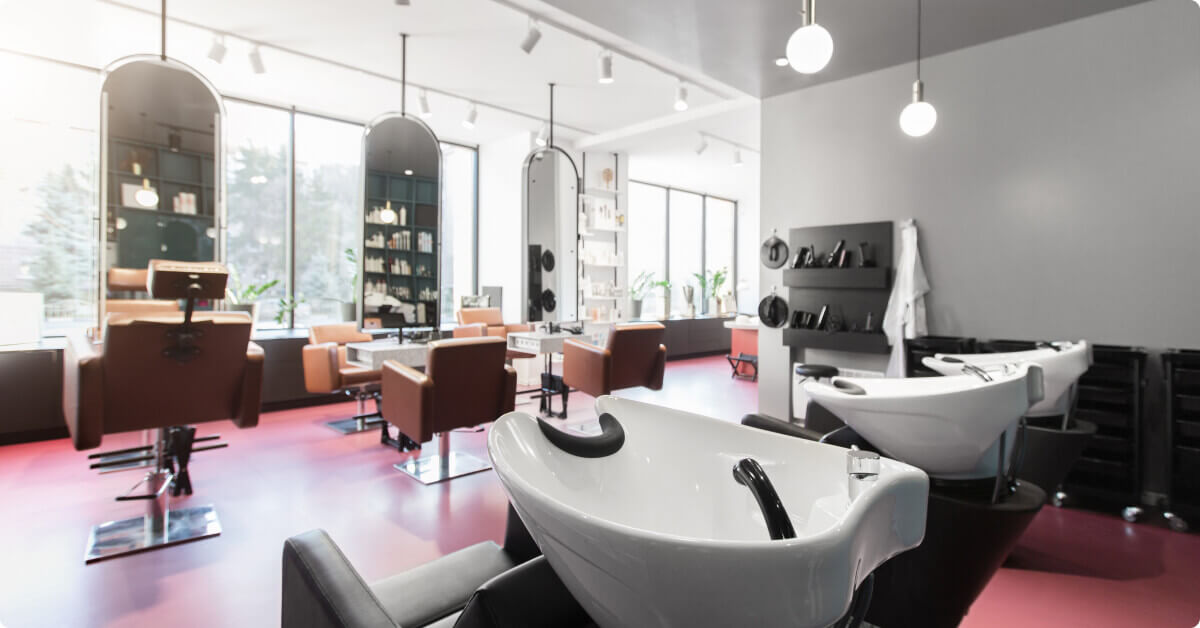The hair salon industry is experiencing significant growth. With an increasing number of people investing in beauty salon services, it seems like an ideal time to venture into the hair salon business. However, one crucial question remains: Is hair salon a good business, and what are the current profit margins in the hair salon industry?
According to statistics, hair salons typically achieve an average profit margin of 8.8%, surpassing the general business average. However, by investing more energy and effort into your salon, you have the potential to increase this margin even further.
Is Hair Salon a Good Business?
To provide clarity on this matter, we decided to investigate.
Is hair salon a good business? On average, a salon generates an annual profit of $19,100. The typical profit margin for salons stands at 8.2%, surpassing the general business average of 7.7% and demonstrating a year-on-year improvement. Salon profit margins can range from 2% to 17%, contingent on the efficiency of the salon’s management.
In this article, we will delve into the fundamental concepts of salon revenue and profit, shedding light on how you can exert influence over them.

4 reasons why hair salons are profitable
Here are four key reasons why hair salons can be highly profitable:
1) Strategic Customer Acquisition:
One of the first steps to success for a hair salon is attracting an initial customer base. Many salons use strategies like discounts and coupons to entice first-time customers. These incentives provide a lower barrier to entry, encouraging people to try out the salon’s services.
Once these customers experience the quality and professionalism of the salon, they are more likely to become repeat clients. Effective customer acquisition strategies not only bring in new business but also set the stage for building a loyal customer base.
2) Tailored Services:
Hair salons that thrive pay close attention to the specific needs and preferences of their target audience. They offer a range of services designed to cater to various hair types, styles, and customer desires. By providing personalized services, salons can ensure client satisfaction.
For instance, they may offer haircuts, coloring, styling, and treatments that address diverse customer requirements. This approach not only attracts clients but also retains them because they know their individual needs are being met.

3) Client Loyalty:
Client retention is a vital component of a profitable hair salon. Loyal customers are more likely to return for regular appointments. The factors that drive client loyalty include the overall experience provided by the salon.
This encompasses a welcoming and pleasant atmosphere, skilled and professional care, the unique style of nail technicians, and other quality services. In essence, it’s about making every visit a positive and memorable experience. The more clients feel valued and well-cared for, the more likely they are to become loyal patrons.
4) Strong Brand Recognition:
Building a recognized and trusted brand is crucial for a salon’s long-term success. A strong brand is a reflection of the salon’s reputation and the quality of its services. It is created through consistent marketing, excellent customer service, and a commitment to excellence.
When people in the community recognize and trust the salon’s brand, they are more likely to choose it over competitors. A strong brand can also lead to word-of-mouth recommendations, which can significantly boost a salon’s customer base. The combination of a trusted brand and positive client experiences can set a salon apart in a competitive market, driving profitability.
6 tips to Earn more at Salon Business
When it comes to the salon business, it’s not just about cutting and styling hair; it’s an art, a science, and a thriving industry. Whether you’re a seasoned pro or just starting, there are key strategies to ensure your salon is not only profitable but becomes a favourite destination for clients seeking pampering, style, and self-care. Let’s explore six valuable tips to help you maximize your earnings in the salon business.
1) Offer exclusivity
To ensure the profitability of your hair salon, it’s not enough to merely have a competitive asset in your portfolio. Whether it’s your business model, the products you offer, the services you provide, or the expertise of your staff, exclusivity is key.
Your inventory plays a crucial role. Using products readily available to the general public won’t set you apart from your competition. To secure the future of your salon, source products exclusively available to licensed professionals. Opt for organic products that cater to your customers’ specific needs, whether it’s for hair care or facial treatments.
However, your inventory isn’t your sole asset. Your professional staff is an even more significant one. Their skills, knowledge, and cultural value define your salon and its future. The employment report from the US Bureau indicates that positions for barbers, hairstylists, and cosmetologists are growing faster than in many other industries. Therefore, the future of the salon business belongs to those who have well-trained, professional experts on their team.
Investing in upskilling your staff, providing them with training on how to handle diverse clients, and motivating them to upsell other products or services is vital.
This investment not only enhances your salon’s reputation but also boosts your profit margins. In the competitive world of hair salons, it’s your exclusive assets and skilled professionals that pave the way for long-term success.

2) Determine a brand identity
Your salon’s brand identity is more than just a logo or a catchy slogan; it’s the personality of your business. Define what makes your salon unique. Is it a relaxing oasis with a focus on holistic wellness? Or perhaps a trendy, high-energy spot for cutting-edge styles? Having a clear brand identity helps you attract clients who resonate with your vision and values.
Developing a Unique Selling Proposition (USP) is essential to distinguish your beauty salon from the competition.
Keep in mind that not all nearby salons are direct competitors. They may offer different services, cater to distinct target demographics, or have varying pricing structures. Rather than adjusting your entire business model in response to every new competitor, conduct thorough market research.
Through this research, identify the unique aspects that your competitors may be overlooking. For instance, consider offering monthly packages that bundle a client’s favourite services. This modest adjustment to your salon’s business model can entice customers to explore your offerings.
3) Choose the proper marketing channels
To enhance your marketing efforts and boost profitability, it’s essential to focus on both your current and potential clients. Your marketing strategy should cater to the different expectations of loyal customers and newcomers. Utilize advertising techniques like local news posts and social media profiles for initial brand recognition. For retaining existing clients, employ strategies like retargeting through Google Ads or Facebook.
Integrating your advertising and communication channels into a cohesive sales funnel is crucial. Effective marketing doesn’t always require extensive budgets; it also involves communication. Engage with your community by participating in events, connecting with influential individuals, and ensuring clear branding.
A well-planned social media calendar with diverse content types, such as viral TikTok videos or Instagram live streaming, can captivate your audience. Keep your website up to date with customer reviews and achievements to build trust. Collaborating with influencers or running affiliate programs can expand your brand exposure and drive sales.
4) Build empathy with clients
To increase profitability in the hair salon industry, it’s crucial to establish a strong connection with your clients. Consider the emotions and words you want them to associate with your services. Meeting their immediate needs is important, but it’s equally essential to be innovative in your offerings.
Whether it’s supply meeting demand or vice versa, the key is to provide solutions that go beyond your clients’ expectations. For instance, introducing unique services like small beauty product refrigerators for clients’ convenience can set your salon apart.
Modern consumers seek a sense of connection with the products and services they use. To foster these bonds, extend your services beyond the salon’s walls. Instead of limiting your engagement to the time they spend at your salon, offer a comprehensive hair care program that complements your services and helps clients achieve their beauty goals.

5) Charge fairly
Setting prices for your services is an important aspect of managing revenue. It can be challenging to determine the right pricing strategy, especially when you’re just starting. To establish a fair price that covers your expenses and generates a profit, consider factors such as your level of training and the cost of your inventory.
You might wonder whether increasing prices affects the profitability of hair salons. Often, stylists are hesitant to raise prices, fearing it may deter new and existing clients. Price adjustments are not only an economic decision but also tied to your self-esteem and the perceived value of your services. Successful entrepreneurs and hairstylists understand the value they bring to their clients and are confident in their skills.
One effective strategy for increasing prices without compromising profitability is to accompany the price hike with discount campaigns. For instance, if you raise prices by 10%, you can launch a “bring a friend” discount campaign offering 15% off.
By incorporating referral programs, you can enhance the perceived value of your services among loyal clients and justify higher prices for potential new clients. This approach leads to an increase in your hair salon’s profit margin.
6) Take care of your costs
If you choose not to increase your prices, it’s important to ensure your spending aligns with your hair salon business plan. An alternative approach to boosting profitability is cost reduction. This involves being resource-efficient, such as turning off energy-consuming equipment when not in use and streamlining your product offerings to match customer preferences more closely.
Another effective way to optimize your operations and increase profits is by investing in a salon software. These systems replace manual booking and phone calls with centralized management tools, offering features that extend beyond appointment scheduling. The right salon software can be a game-changer for your salon business.

Conclusion
For entrepreneurs inquiring about the profitability of owning a hair salon, it’s important to understand that as long as people exist, there will always be a demand for top-notch hair salons. Therefore, the question, is hair salon a good business doesn’t have a one-size-fits-all answer.
It largely depends on the individual experiences of salon owners. To stand out in the crowded salon industry and achieve financial success, hard work and dedication are essential.
The salon industry is not just about hair; it’s about crafting exceptional experiences and leaving a lasting impression. Implement these tips and watch your earnings and client base flourish. Your salon can become the go-to destination for style, pampering, and beauty.

